It’s no secret that Portugal has become one of the most desirable, affordable, and safest places to live in Europe. With its historic, cobbled villages, idyllic coastline, welcoming locals, and moderate climate, it’s no wonder expats are drawn here.
Although relatively small in size compared to its neighbor Spain, Portugal offers a plethora of living options. While some people never look beyond Lisbon, the country’s lively capital, or Porto, a second favorite city in the north, there are plenty of small-town options just waiting to be called home.
Get Your Free Portugal Report Today!
Get Your Free Portugal Report Today!
Discover why we love a slower pace of life in Portugal and info on other European countries in our daily postcard e-letter. Simply enter your email address below and we’ll send you a FREE REPORT – Explore the Old World in Laidback Portugal.

By submitting your email address, you will receive a free subscription to IL Postcards, Overseas Dream Home, The Untourist Daily and special offers from International Living and our affiliates. You can unsubscribe at any time, and we encourage you to read more about our Privacy Policy.
The Northern Region
Summers in the north are springlike, with temperatures averaging between 65 F and 75 F, while winters bring abundant rain and above-freezing temperatures. For example, a summer day in the north may only reach 65 F, while in the south, it could hit 95 F. A typical winter day in the north might be wet, with highs around 40 F, but just a five-hour drive south, you’ll find abundant sunshine and temperatures in the 70s.
Caminha: An Inviting Border Town
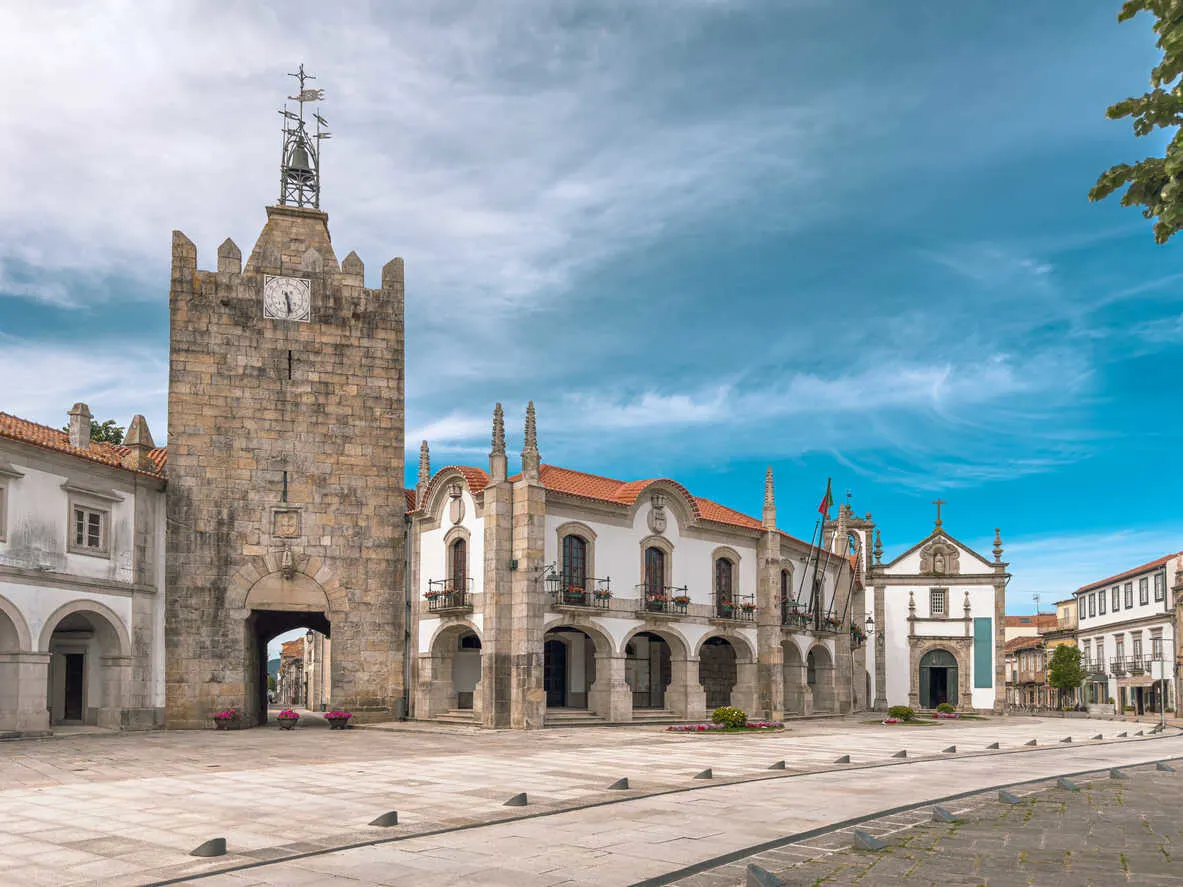
This fortified border town, located at the mouth of the Minho River, was once the site of battles between Spain and Portugal. With a population of around 17,000, Caminha (camin-yah) is part of a municipality divided into fourteen subdivisions called "freguesias."
In Caminha’s compact old town, the central plaza, Praça do Conselheiro Silva Torres, showcases the remains of this medieval wonder. A majestic fountain takes center stage, encircled by cafes, restaurants, and shops. The 17th-century clock tower stands proudly atop one of the three original city gates that has survived. Since 1610, its chimes have echoed hourly, while the nearby church invites all to step inside.
Caminha is also part of the Portuguese Way of Saint James, a pilgrimage that culminates in Santiago de Compostela, Spain. A ferry offers easy river crossings for pilgrims and visitors alike. The town provides a public hospital, medical and dental clinics, grocery stores, and a shopping center. Larger cities like Braga and Porto, with additional amenities and an international airport, are within an hour’s reach.
Viana do Castelo: Age of Discoveries
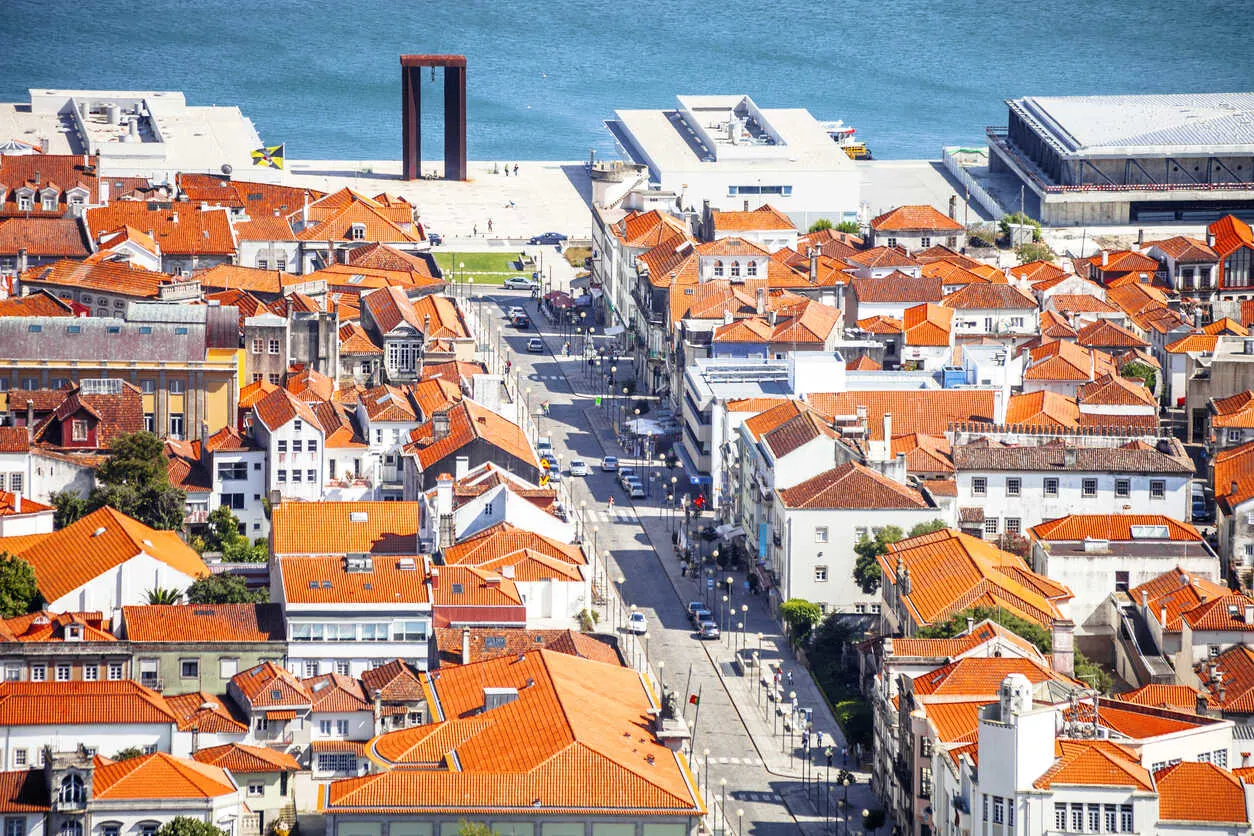
During the Age of Discoveries, Portuguese explorers set sail from here to find new worlds. Later, the town gained fame for cod fishing and trade. Today, Viana do Castelo, with its 36,000 residents, remains connected to the sea, offering a plethora of seafood restaurants and the historic Gil Eannes, a former hospital ship turned museum.
At the heart of the old town lies Praça da República, an enchanting plaza flanked by historic buildings like the Igreja da Misericórdia and the former city hall. A 16th-century Renaissance fountain stands at its center, surrounded by cafes and shops.
Foreigners love Viana do Castelo’s authentic Portuguese charm, year-round festivals, and affordable lifestyle. The town also boasts a private hospital, clinics, a shopping center with an English-friendly cinema, and a growing expat community.
Águeda – The Umbrella City
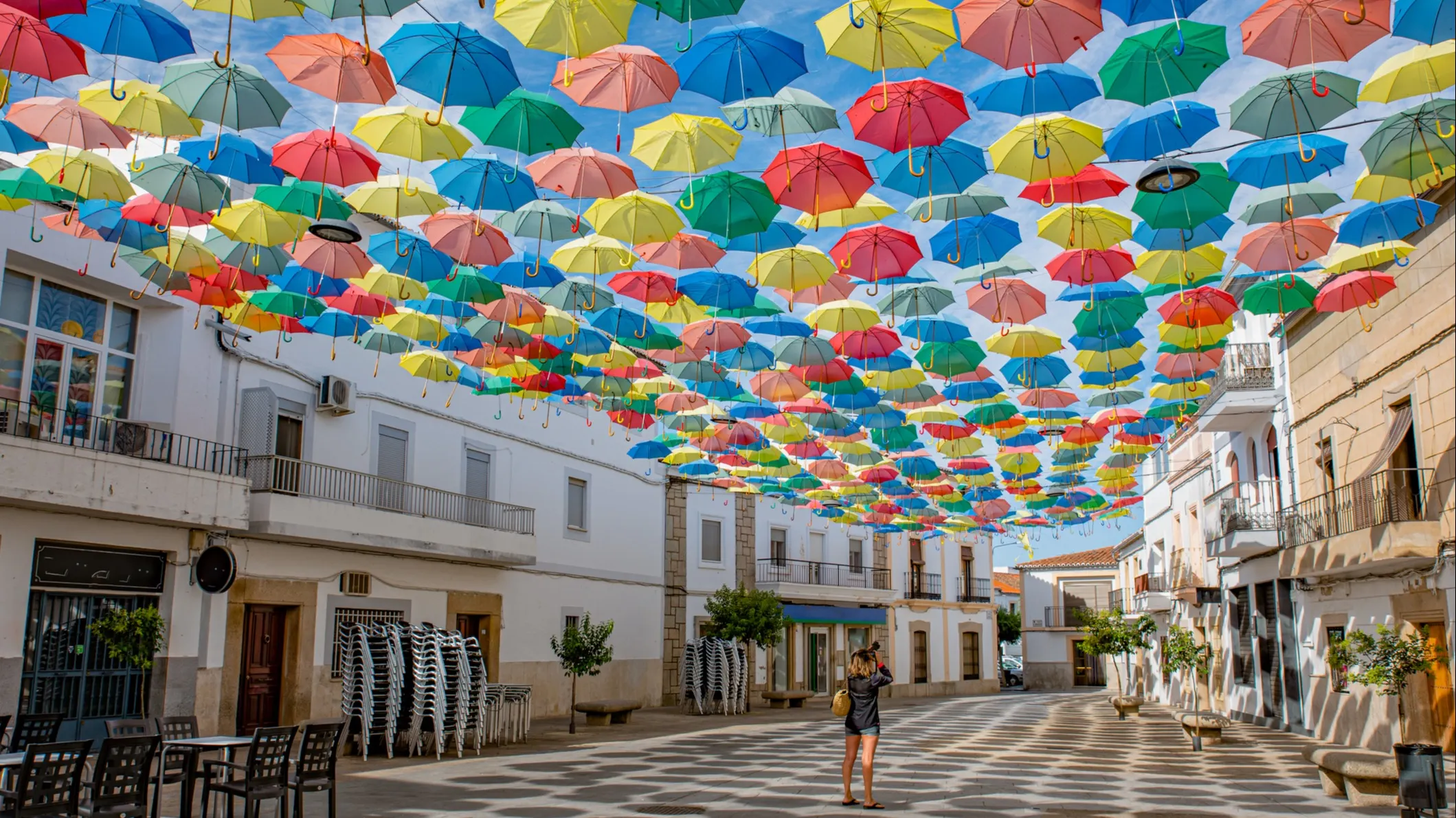
Nicknamed “the umbrella city,” Águeda, with a population of around 12,000, is just a one-hour drive south of Porto. Virtually unknown until 2011, the Umbrella Sky Project transformed the town into a kaleidoscope of color. Some 3,000 multicolored umbrellas are suspended almost magically from the sky, and when illuminated by the sun, they cast a whimsical glow on everything. The project encouraged local artists to paint the town, leaving their mark on lamp posts, walls, stairs, trash cans, benches, electrical boxes, and more. Águeda is a stopover on the Portuguese Way of the famous Camino that culminates in Spain.
Oodles of shops, restaurants, and cafes line the fanciful lanes, while nearby large grocery stores, hospitals, clinics, and more make the city a livable option for expats. With the influx of tourists and pilgrims, English speakers are easy to find, making settling into life here a breeze.
The Central Region
The middle of Portugal is a bit warmer than the north, with summer temperatures reaching into the 80s, but winters still bring plenty of rain and cold.
Tomar – Home of the Knights Templar
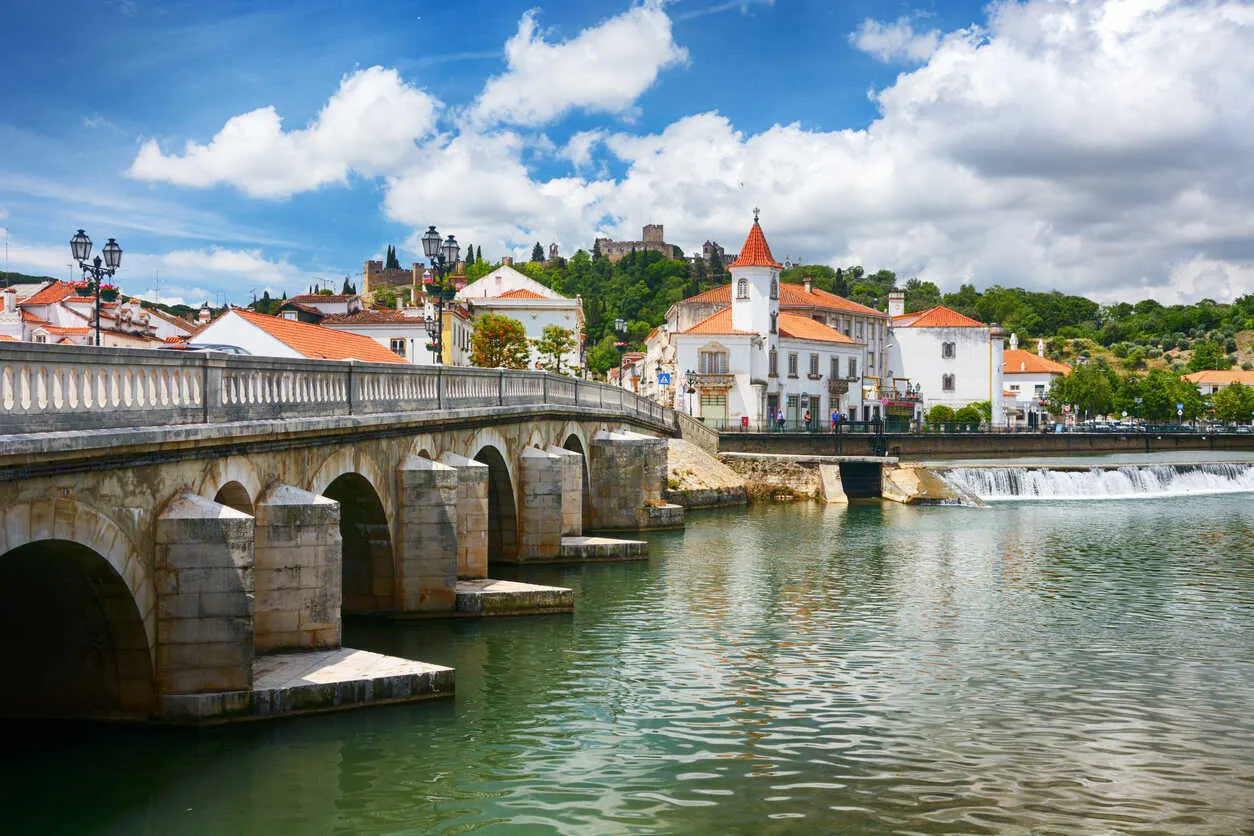
The town of Tomar (tu-mar) was founded in 1159 when the king gifted a former castle to the Knights Templar, a religious and chivalric order. The castle was converted into the Convento de Cristo, a colossal stronghold and home base of the Knights Templar for nearly 700 years. The massive complex took over five decades to complete and is perched on top of a hill overlooking the town. While most people visit Tomar to see the convent, many fall in love with its charms and decide to stay.
Every four years in July, Tomar invites visitors to witness a celebration like none other. Known locally as the Festa dos Tabuleiros (or tray festival), women process through the streets carrying five-foot trays on top of their heads that weigh around fifty pounds each. Each tray is made of bread loaves and flowers, built around a frame, topped off with a cross or dove.
The charming city of 20,000 has both public and private hospitals, clinics, a variety of shops and restaurants, along with an expat community. Just a short distance from the city center are the river beaches of Montes Tomar, ideal for swimming or water sports.
Caldas da Rainha – The Queen’s Hot Springs
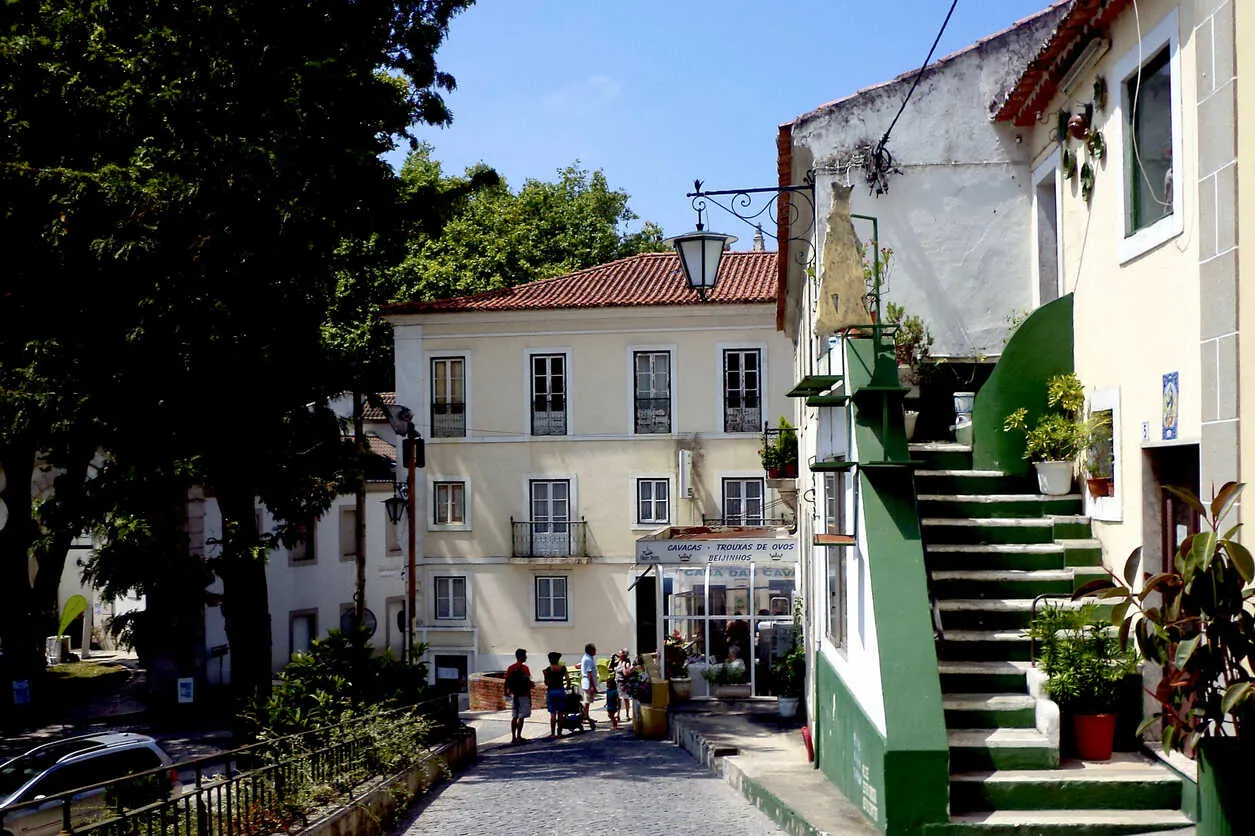
The town of Caldas da Rainha (cal-dash-d-hain-yah), just one hour north of Lisbon, is fit for a queen. The city of 30,000 was founded in the 15th century by Queen Leonor when she discovered some locals bathing in a thermal spring along the roadside. Her majesty took advantage of the thermal water, which healed an unknown affliction of hers. Genuinely impressed, she ordered a hospital to be built on the site, and that hospital, the oldest in the world, is still in operation today.
The bustling Praça da Fruta hosts a daily fresh produce market, while the nearby fish market offers local catches. Caldas also features a flea market every Monday and is renowned for its ceramics culture, museums, and a multi-level shopping center with English-language movies. Expats enjoy the town’s green spaces, such as Parque Dom Carlos I, and benefit from its private hospital, clinics, and easy transportation links, including express buses to Lisbon.
Óbidos – A Wedding Gift
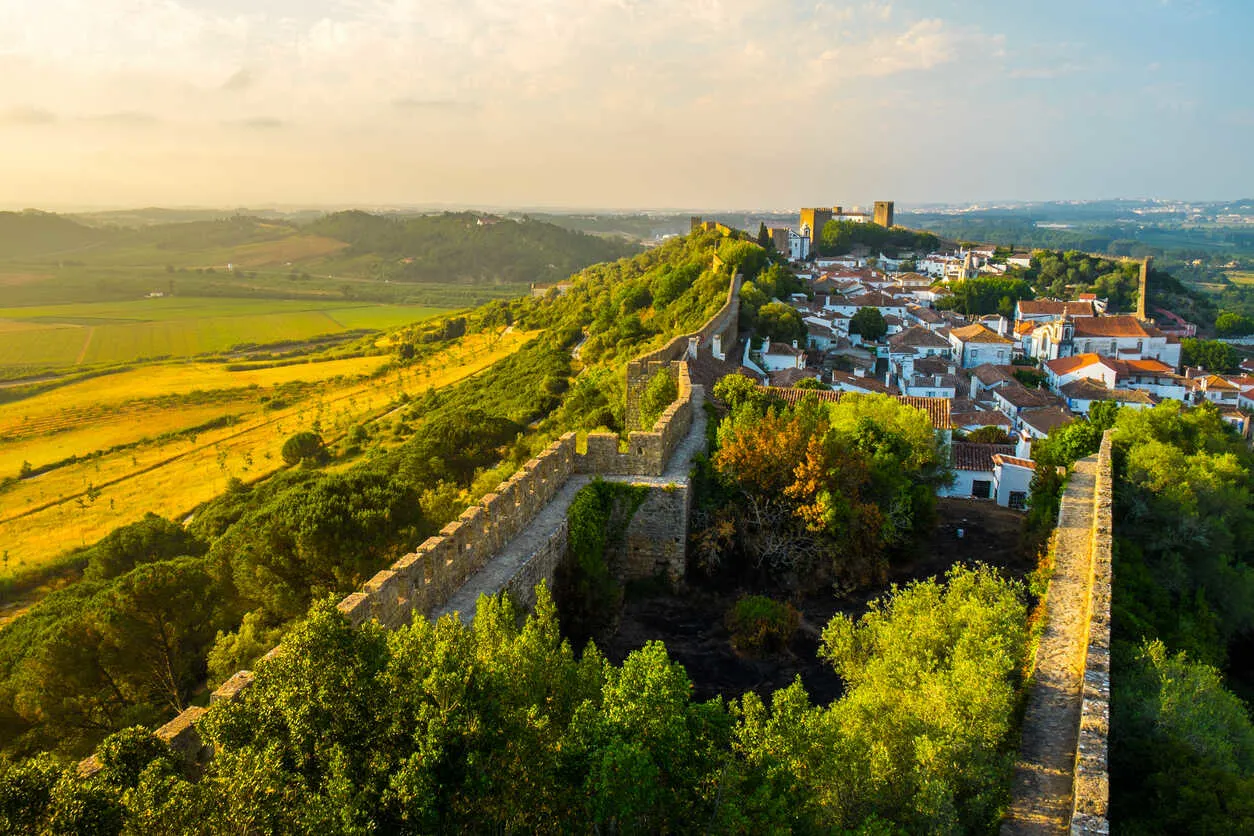
Óbidos (awe-bee-do-ssh), gifted to Queen Isabel in 1282, is one of Portugal’s best-preserved medieval towns. Inside its walls, cobbled streets lead to charming shops selling the famous ginja liqueur served in chocolate cups. At the town’s end, a well-preserved castle now operates as a luxurious hotel.
Óbidos hosts diverse festivals throughout the year, from medieval fairs to a whimsical Christmas village. Expats often live outside the city walls, enjoying the proximity to Caldas da Rainha’s amenities.
Get Your Free Portugal Report Today!
Get Your Free Portugal Report Today!
Discover why we love a slower pace of life in Portugal and info on other European countries in our daily postcard e-letter. Simply enter your email address below and we’ll send you a FREE REPORT – Explore the Old World in Laidback Portugal.

By submitting your email address, you will receive a free subscription to IL Postcards, Overseas Dream Home, The Untourist Daily and special offers from International Living and our affiliates. You can unsubscribe at any time, and we encourage you to read more about our Privacy Policy.
The Alentejo Region
The Alentejo is the rural interior of Portugal, with rolling hills, fortified towns, and intense summer heat. Winters are cold with some rain, and summers are dry, with temperatures that can exceed 95°F. Since the region is so expansive, it may be hard for new expats to make friends. For anyone with a desire to live rurally, buy a house with land, and be fully immersed in the Portuguese culture and language, the Alentejo could be for you.
Évora – Ancient Roman City
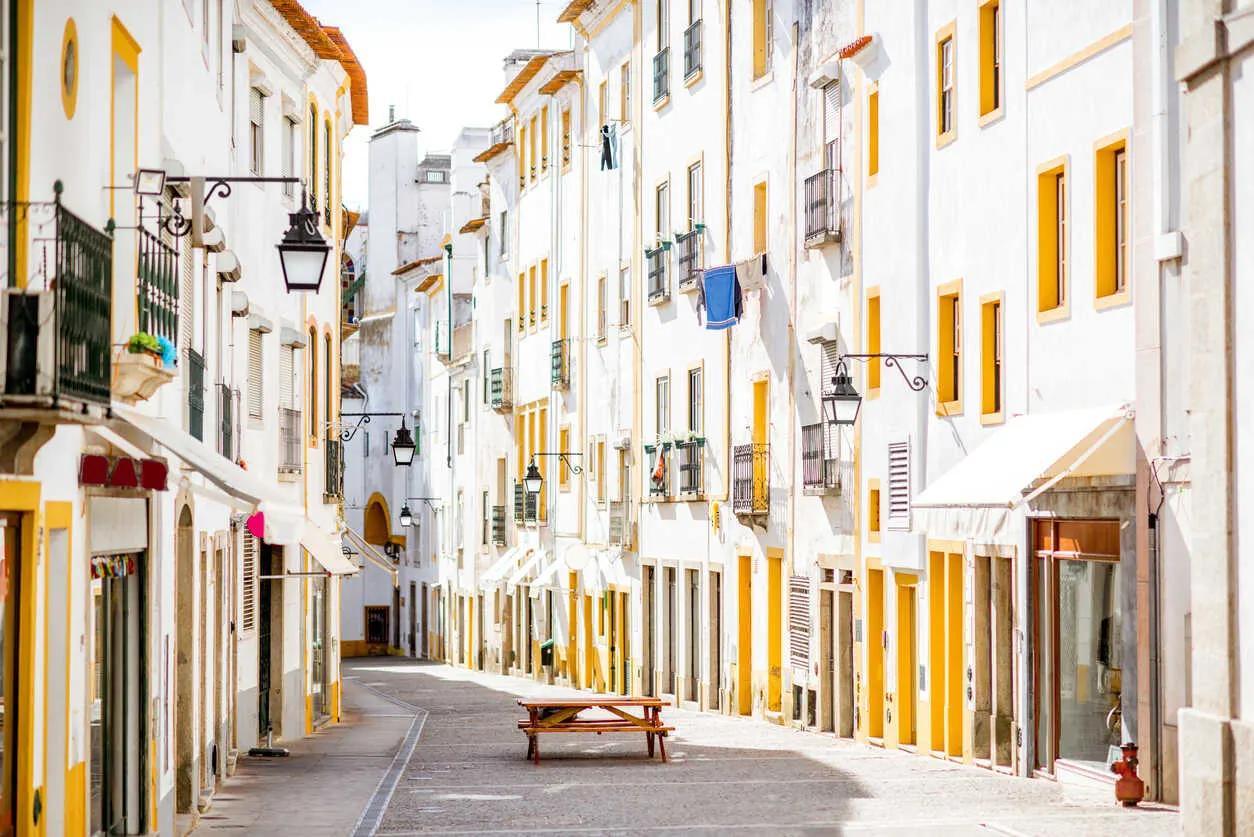
One of the few places in the Alentejo that does see its share of tourists is Évora. The historic center is a living museum, where the ancient Roman Temple of Diana dominates the skyline. The medieval cathedral, the largest and oldest in the country, was constructed between 1186 and 1284. Part of the wall that once enclosed the city still remains, like the fortified gate and the timeworn Arab Kasbah.
Nearby, the Chapel of Bones coaxes visitors in to read the eerie inscription, “nós ossos que aqui estamos, pelos vossos esperamos”—“we bones that are here await yours.” Because of the influx of tourists, English-speaking locals are easy to find in Évora, unlike some of the other towns.
Expats can expect to find apartments to rent or buy within the city, while freestanding houses can be found in rural, outlying areas. The city of 50,000 boasts private and public hospitals, medical and dental clinics, and a variety of shopping options. The closest airport to Évora is in Badajoz, Spain, about a 90-minute drive away.
Beja – Rural Lowland
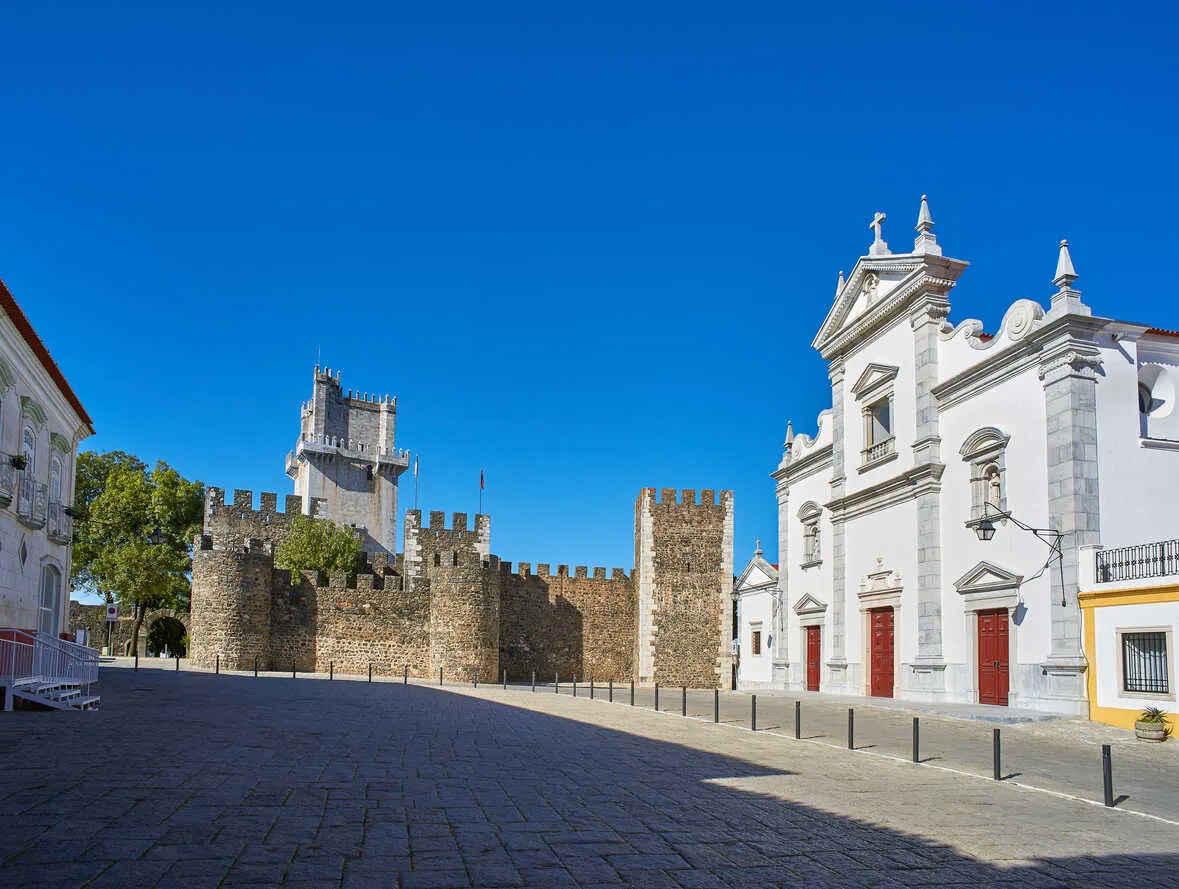
The ancient city of Beja (bay-jah), in the lower Alentejo, is surrounded by a seemingly endless landscape of agricultural fields and countryside. In the center of the old town is a medieval castle with its imposing tower, offering a panoramic view of the area. Meander through the castle’s medieval walls and feel like royalty. During Roman times, it was here that Julius Caesar signed a peace treaty with the Lusitanian tribes to gain control over the land.
Praça da República, the city’s main square, is the heartbeat of Beja for visitors and locals alike. Grab a chair at any cafe and order a coffee and pastry, or return for dinner under the stars and sip wine with friends until the sun comes up. Life in this traditional working city is slow-paced and calm.
Because Beja is so rural, foreigners can expect to find property to buy with land, perfect for gardening. In town, like elsewhere in Portugal, apartment living is the norm for those who wish to live near the center. The city of 35,000 has a public hospital, private medical clinics, large grocery stores, small shops, restaurants, and cafes. The closest international airport is a 90-minute drive in Faro.
The Algarve
In the south is the Algarve, which boasts the best weather in the country and sunshine galore. Winters are less rainy than in the north, with temperatures that range from mild, 65°F, to colder at night, 45°F. Summertime temperatures are warm to hot, ranging from 75°F to 90°F, and dry.
Vila Real de Santo António – The Royal Town
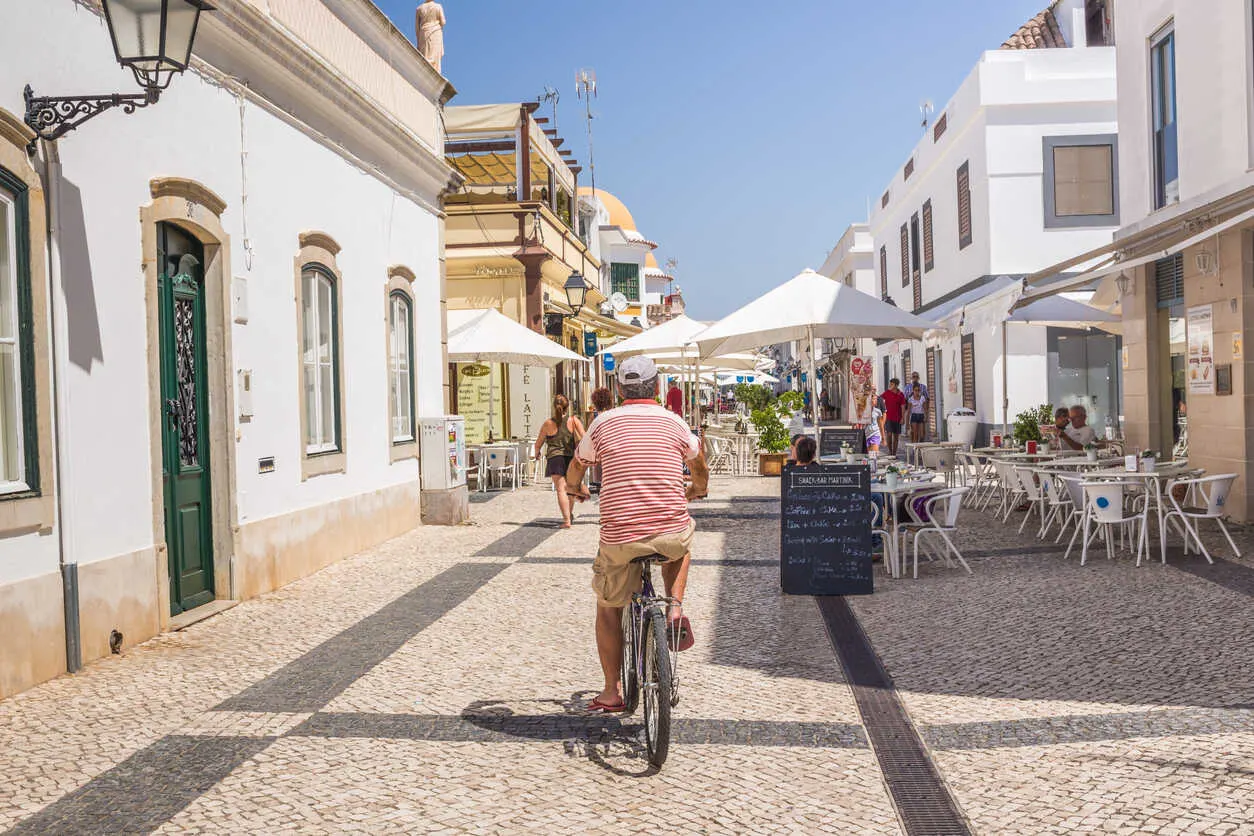
The Royal Village of Saint Anthony, the patron saint of Portugal, was founded in 1774 by the Marquis of Pombal. Destroyed by a tsunami following the great earthquake of 1755, the town was reconstructed in just two years, following the grid-like design of downtown Lisbon. Known locally as VRSA (vir-sa), this fishing village of 20,000 is situated between the Guadiana River, which forms the natural border with Spain, and the Atlantic Ocean.
Every December, the town glows with holiday decorations and the most colossal Christmas village in the country, if not the world. The massive design features more than 5,600 figures, 20 tons of sand, 8,000 pounds of rock dust, and 6,000 pounds of cork, filling a 2,500-square-foot space in the cultural center. Animatronic birds fly overhead, babbling brooks run through miniature villages, and sounds of people and animals fill the air.
The town has a private health clinic for medical and dental services, large grocery stores, small shops, restaurants, cafes, and a small expat community. Nearby beaches include both river and ocean options, and the Spanish border is easily accessible. The city of Faro is less than an hour’s drive away, with both private and public hospitals, as well as an international airport.
Lagos – Seascapes Galore
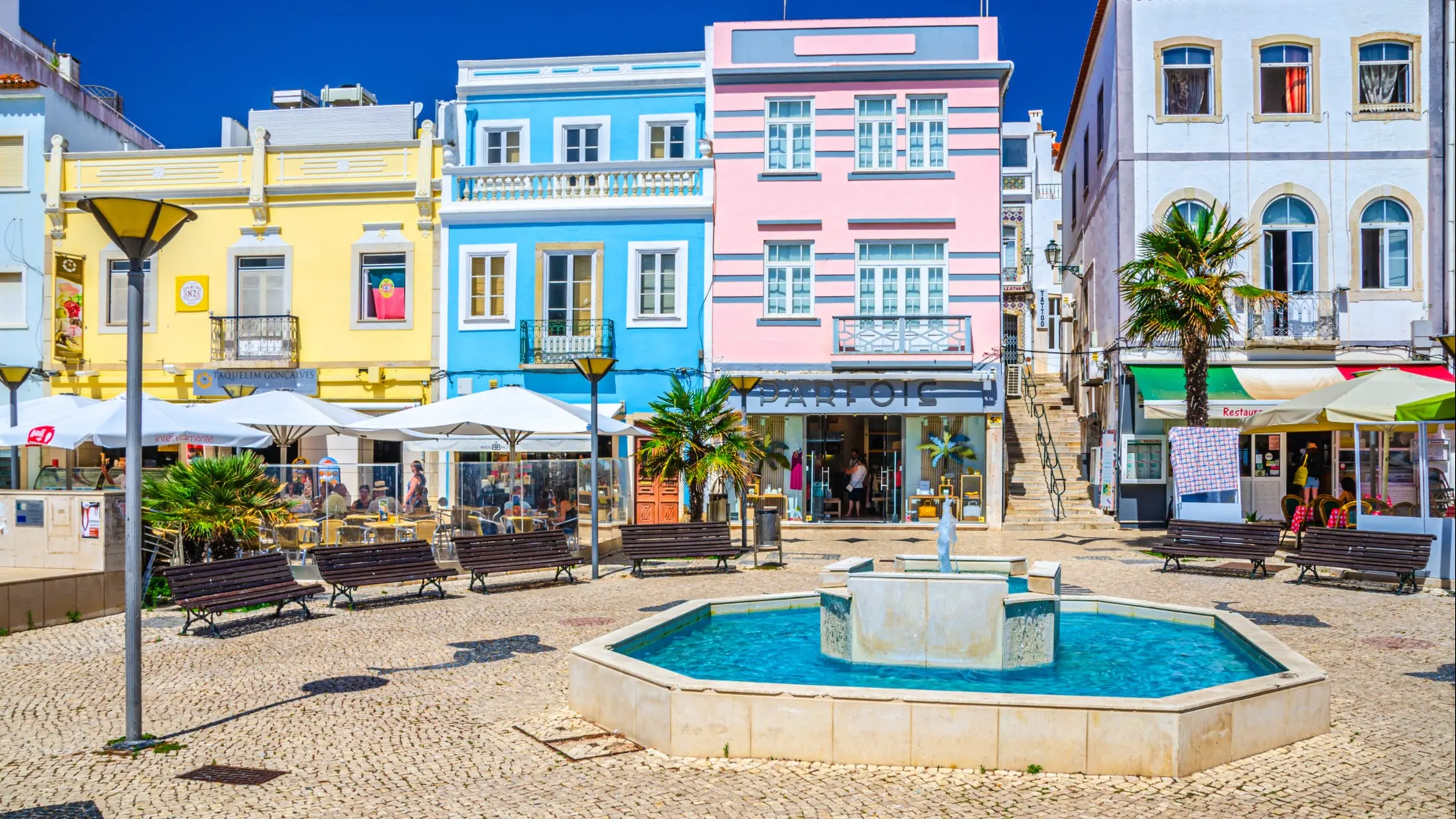
In the western Algarve, Lagos (lah-gush) sits along the banks of the Bensafrim River. The venerable 17th-century fort that once protected the port stands as a reminder of days gone by. The city of 19,000 is a favorite among expats and visitors, so English speakers are easy to find.
The golden sands of Praia da Batata (Potato Beach) lure visitors to dip their toes in the water. The beach is sheltered from large Atlantic waves, making it ideal for families. A short jaunt from the town center is Ponta da Piedade, a dramatic headland of towering limestone cliffs, sea pillars, craggy arches, and hidden grottoes.
Expats in Lagos enjoy access to both public and private hospitals, clinics, a retail park, and numerous smaller shops and restaurants. The town has a large international expat community, and Faro International Airport is just an hour away.
Tavira – Authentic Allure
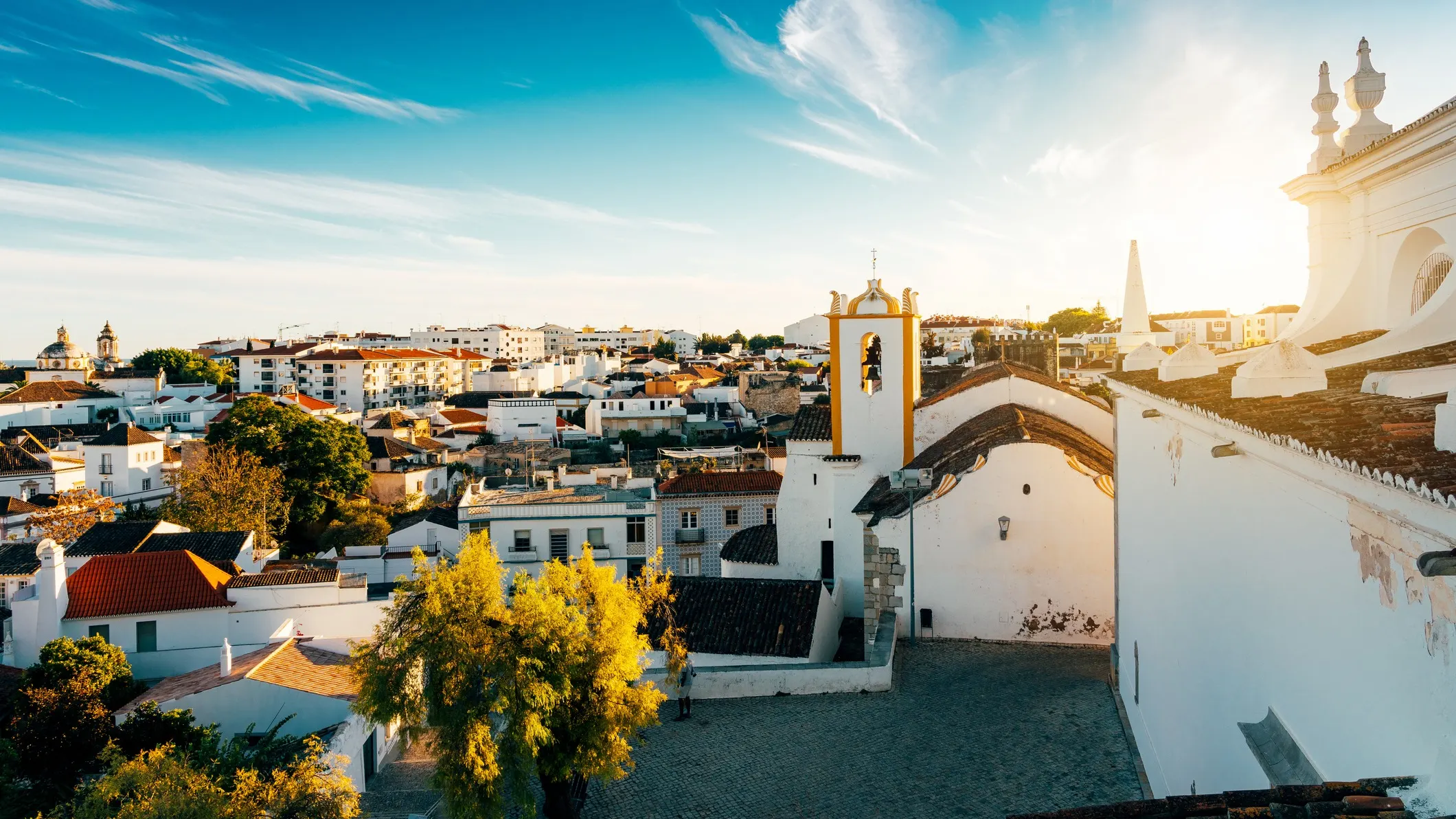
Stroll across the picturesque Roman Bridge that spans the slow-moving River Gilão and cherish the view. Whitewashed houses with terracotta roofs, cobbled lanes lined with cafes and shops, and the sound of a violinist playing nearby set a romantic scene.
Expats are drawn to Tavira for its authentic charm, with modern conveniences like the Gran Plaza shopping center and easy access to the beaches of Tavira Island, reachable by ferry. The nearby cities of Faro and Loulé provide additional healthcare options, including private hospitals and specialized clinics.
Conclusion
Portugal’s small towns offer an affordable, high-quality lifestyle with modern conveniences, healthcare, and cultural richness. Whether you prefer the lush north, historic central region, rural Alentejo, or sunny Algarve, there’s a perfect Portuguese town waiting for you.
How To Move Out of the U.S.
How To Move Out of the U.S.
The policy implications of the last election impacted your retirement funds, taxes, healthcare, and more. But you can protect yourself, your family, your future. In lots of safe, warm, friendly spots abroad, you can live comfortably on a budget from $2,000-$3,800 a month (all-in—housing and extras included). We’ll show you how—and where—to go.

By submitting your email address, you will receive a free subscription to IL Postcards, Overseas Dream Home, The Untourist Daily and special offers from International Living and our affiliates. You can unsubscribe at any time, and we encourage you to read more about our Privacy Policy.
